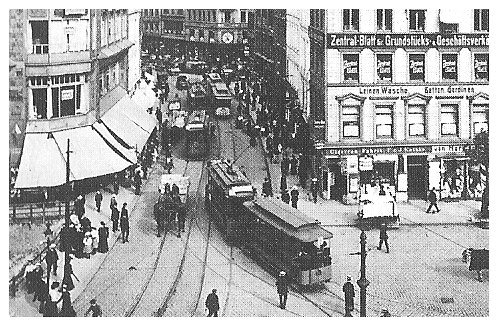|
Köhlbrand Bridge
The Köhlbrand Bridge (german: Köhlbrandbrücke) is a cable-stayed bridge in Hamburg, Germany,Stahl, F. L., & Gagnon, C. P. (1996)Cable Corrosion in Bridges and Other Structures: Causes and SolutionsASCE Publications. . Retrieved on 16 March 2012 which connects the harbor area on the island of Wilhelmsburg between the Norderelbe and Süderelbe branches of the Elbe river with motorway 7 (exit Waltershof). It bridges the Süderelbe, here called Köhlbrand, before it unites with the Norderelbe again. The bridge was opened on 9 September 1974. See also * List of bridges in Hamburg * List of bridges in Germany This list of bridges in Germany lists bridges of particular historical, scenic, architectural or engineering interest. Road and railway bridges, viaducts, aqueducts and footbridges are included. Historical and architectural interest bridges {{ro ... References External links * Videoof the Köhlbrand Bridge Being Inspected by UAV/drone {{DEFAULTSORT:Kohlbra ... [...More Info...] [...Related Items...] OR: [Wikipedia] [Google] [Baidu] |
Port Of Hamburg
The Port of Hamburg (german: Hamburger Hafen, ) is a seaport on the river Elbe in Hamburg, Germany, from its mouth on the North Sea. Known as Germany's "Gateway to the World" (''Tor zur Welt''), it is the country's largest seaport by volume. In terms of TEU throughput, Hamburg is the third-busiest port in Europe (after Rotterdam and Antwerp) and 15th-largest worldwide. In 2014, 9.73 million TEUs (20-foot standard container equivalents) were handled in Hamburg. The port covers an area of (64.80 km2 usable), of which 43.31 km2 (34.12 km2) are land areas. The branching Elbe creates an ideal place for a port complex with warehousing and transshipment facilities. The extensive free port was established when Hamburg joined the German Customs Union. It enabled duty-free storing of imported goods and also importing of materials which were processed, re-packaged, used in manufacturing and then re-exported without incurring customs duties. The free port was ... [...More Info...] [...Related Items...] OR: [Wikipedia] [Google] [Baidu] |
Köhlbrand
Köhlbrand is an anabranch of the Unterelbe river in the Port of Hamburg, Germany. It has a width of approximately . History The branch emerged during floods in the 14th and 15th centuries, which separated the former Elbe island of ''Gorieswerder''. The Köhlbrand is bridged by the Köhlbrand Bridge, both probably named after charcoal burners (''Köhler''), whose fires (''Brand'') could be seen along the river banks and who sold coal to the boatmen. Until the 19th century dockyards were located at the banks of Köhlbrand. According to the third Köhlbrand treaty signed in 1908, the anabranch was relocated around to the west and deepened by to . Its former pathway is marked by the harbour basin of Kohlenschiffhafen, which is almost completely filled up with sand today.Hamburg Lexikon, ed. by Franklin Kopitzsch and Daniel Tilgner, Hamburg 2005, p.277f. Nowadays, the complete Süderelbe waterflow is redirected through the Köhlbrand, which is a main access to the Containe ... [...More Info...] [...Related Items...] OR: [Wikipedia] [Google] [Baidu] |
Transport In Hamburg
Transport in Hamburg comprises an extensive, rail system, subway system, airports and maritime services for the more than 1.8 million inhabitants of the city of Hamburg and 5.3 million people in the Hamburg Metropolitan Region. Since the Middle Ages, as a Hanseatic City one part of Hamburg's transport was the economic trade with other cities or regions. In 2008, the port of Hamburg was the second-largest port in Europe. Hamburg is connected to four motorways and in Hamburg proper are two airports. The Hamburg traffic group ''Hamburger Verkehrsverbund'' was the first organisation of its kind in the world and in 2008, was in charge for the public transport management in three German states. In 2007, more than 618 million passengers used bus, rapid transit, ferries or light rail. History A charter in 1189 by Frederick I, Holy Roman Emperor granted Hamburg the status of a free imperial city and tax-free access up the Lower Elbe into the North Sea, the right to fis ... [...More Info...] [...Related Items...] OR: [Wikipedia] [Google] [Baidu] |
Buildings And Structures In Hamburg-Mitte
A building, or edifice, is an enclosed structure with a roof and walls standing more or less permanently in one place, such as a house or factory (although there's also portable buildings). Buildings come in a variety of sizes, shapes, and functions, and have been adapted throughout history for a wide number of factors, from building materials available, to weather conditions, land prices, ground conditions, specific uses, prestige, and aesthetic reasons. To better understand the term ''building'' compare the list of nonbuilding structures. Buildings serve several societal needs – primarily as shelter from weather, security, living space, privacy, to store belongings, and to comfortably live and work. A building as a shelter represents a physical division of the human habitat (a place of comfort and safety) and the ''outside'' (a place that at times may be harsh and harmful). Ever since the first cave paintings, buildings have also become objects or canvasses of much artistic ... [...More Info...] [...Related Items...] OR: [Wikipedia] [Google] [Baidu] |
Cable-stayed Bridges In Germany
A cable-stayed bridge has one or more ''towers'' (or ''pylons''), from which cables support the bridge deck. A distinctive feature are the cables or stays, which run directly from the tower to the deck, normally forming a fan-like pattern or a series of parallel lines. This is in contrast to the modern suspension bridge, where the cables supporting the deck are suspended vertically from the main cable, anchored at both ends of the bridge and running between the towers. The cable-stayed bridge is optimal for spans longer than cantilever bridges and shorter than suspension bridges. This is the range within which cantilever bridges would rapidly grow heavier, and suspension bridge cabling would be more costly. Cable-stayed bridges were being designed and constructed by the late 16th century, and the form found wide use in the late 19th century. Early examples, including the Brooklyn Bridge, often combined features from both the cable-stayed and suspension designs. Cable-staye ... [...More Info...] [...Related Items...] OR: [Wikipedia] [Google] [Baidu] |
Bridges In Hamburg
A bridge is a structure built to Span (engineering), span a physical obstacle (such as a body of water, valley, road, or rail) without blocking the way underneath. It is constructed for the purpose of providing passage over the obstacle, which is usually something that is otherwise difficult or impossible to cross. There are many different designs of bridges, each serving a particular purpose and applicable to different situations. Designs of bridges vary depending on factors such as the function of the bridge, the nature of the terrain where the bridge is constructed and anchored, and the material used to make it, and the funds available to build it. The earliest bridges were likely made with fallen trees and stepping stones. The Neolithic people built boardwalk bridges across marshland. The Arkadiko Bridge (dating from the 13th century BC, in the Peloponnese) is one of the oldest arch bridges still in existence and use. Etymology The ''Oxford English Dictionary'' traces ... [...More Info...] [...Related Items...] OR: [Wikipedia] [Google] [Baidu] |




